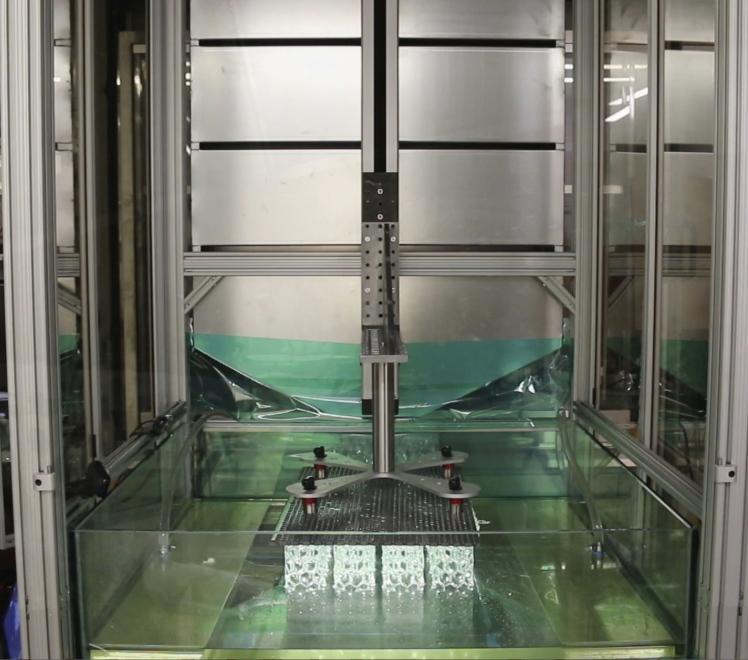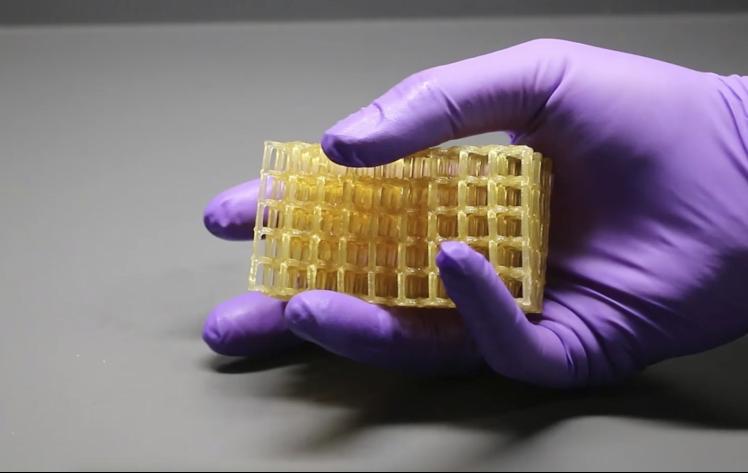- FMA
- The Fabricator
- FABTECH
- Canadian Metalworking
Our Publications
Categories
- Additive Manufacturing
- Aluminum Welding
- Arc Welding
- Assembly and Joining
- Automation and Robotics
- Bending and Forming
- Consumables
- Cutting and Weld Prep
- Electric Vehicles
- En Español
- Finishing
- Hydroforming
- Laser Cutting
- Laser Welding
- Machining
- Manufacturing Software
- Materials Handling
- Metals/Materials
- Oxyfuel Cutting
- Plasma Cutting
- Power Tools
- Punching and Other Holemaking
- Roll Forming
- Safety
- Sawing
- Shearing
- Shop Management
- Testing and Measuring
- Tube and Pipe Fabrication
- Tube and Pipe Production
- Waterjet Cutting
Industry Directory
Webcasts
Podcasts
FAB 40
Advertise
Subscribe
Account Login
Search
Oversized, high-throughput 3D printer introduced
A 13-ft.-tall 3D printer developed by Northwestern University builds human-size objects in hours
- October 23, 2019
- Article
- Additive Manufacturing
Northwestern University researchers have developed a new, futuristic 3D printer that is big enough and fast enough to print an object the size of an adult human in just a couple of hours.
Called HARP (high-area rapid printing), the new additive manufacturing (AM) system boasts reportedly record-breaking throughput capabilities and can manufacture products on demand. The prototype printer reaches 13 ft. into the air, features a 2.5-sq.-ft. print bed, and prints at the rate of about 0.5 yard an hour. It can print a single, large part or many different, smaller parts during a build cycle.
HARP prints hard, durable parts and elastic, bouncy objects. Its innovative interface circulates liquid to remove system heat, which limits current stereolithographic 3D printers. The designers of the new AM system say it could be used to print parts for medical devices, cars, airplanes, and construction equipment.
HARP is scheduled to be available commercially in the next 18 months.
Keeping It Cool
“3D printing is conceptually powerful but has been limited practically,” said Northwestern Prof. of Chemistry and Biomedical Engineering Chad A. Mirkin, who led the product’s development. “If we could print fast without limitations on materials and on size, we could revolutionize manufacturing. HARP is poised to do that.”
Over the last 30 years, most efforts in 3D printing have been aimed at pushing the limits of legacy technologies. Often, the pursuit of larger parts has come at the cost of speed, throughput, and resolution. With HARP technology, such compromises are unnecessary, enabling it to compete with both the resolution and throughput of traditional manufacturing techniques.
HARP’s operation is based on a new, patent-pending version of stereolithography technology. It prints vertically and uses projected ultraviolet light to cure the liquid resins into hardened plastic.
A major limiting factor of current 3D printers is heat. Every resin-based 3D printer generates a lot of heat when running at fast speeds—sometimes in excess of 180 degrees C. Not only does this lead to dangerously hot surface temperatures, it also can cause printed parts to crack and deform. The faster a printer works, the more heat it generates. And if it’s big and fast, the heat is incredibly intense.
The Northwestern technology sidesteps this problem thanks to a nonstick liquid that behaves like “liquid TeflonTM.” HARP projects light through a window to solidify resin on top of a vertically moving plate. The liquid flows over the window to remove heat and then circulates it through a cooling unit.

The 13-ft.-tall HARP additive system Northwestern developed prints vertically. All images: Northwestern University
“Our technology generates heat just like the others,” Mirkin said. “But we have an interface that removes the heat.”
The text is an edited excerpt from an article posted to the Northwestern University website. A more detailed report can be found at the Science magazine website.
About the Publication
- Podcasting
- Podcast:
- The Fabricator Podcast
- Published:
- 04/16/2024
- Running Time:
- 63:29
In this episode of The Fabricator Podcast, Caleb Chamberlain, co-founder and CEO of OSH Cut, discusses his company’s...
- Trending Articles
- Industry Events
16th Annual Safety Conference
- April 30 - May 1, 2024
- Elgin,
Pipe and Tube Conference
- May 21 - 22, 2024
- Omaha, NE
World-Class Roll Forming Workshop
- June 5 - 6, 2024
- Louisville, KY
Advanced Laser Application Workshop
- June 25 - 27, 2024
- Novi, MI



























